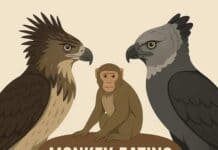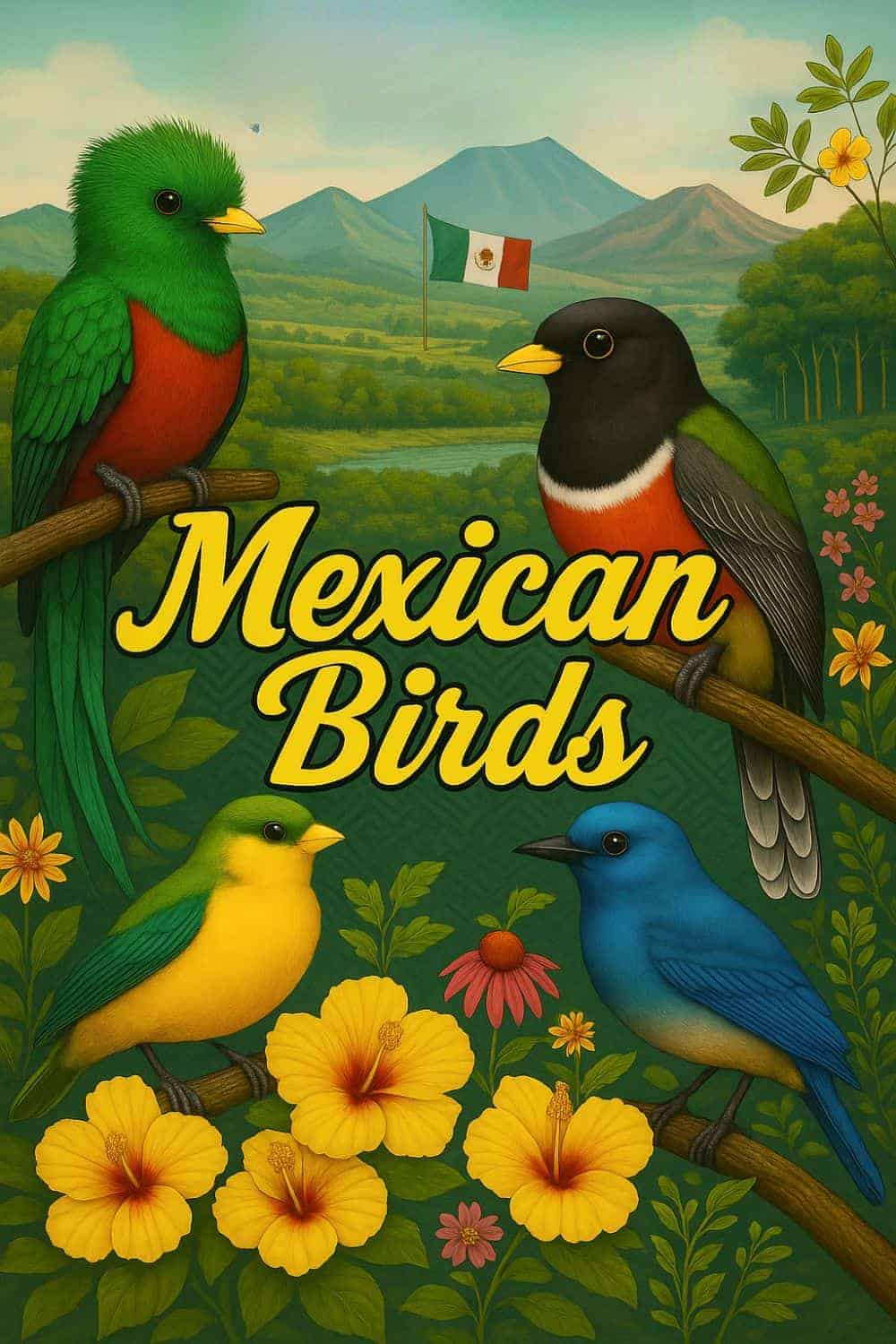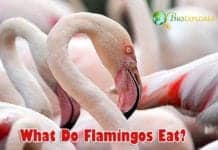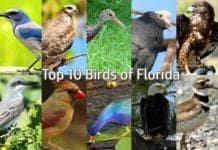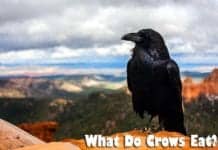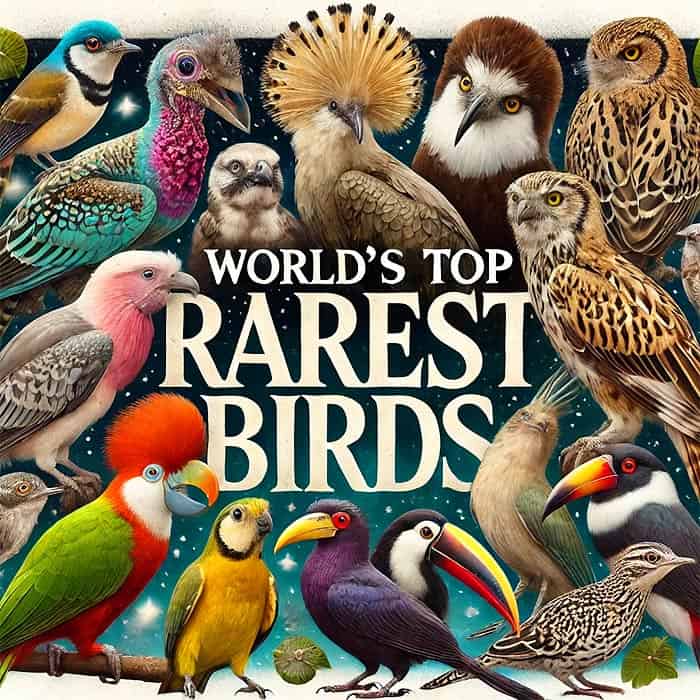
Rare Birds: The world is home to countless incredible birds, but some of the most fascinating are the ones we rarely see. Many face habitat destruction, climate change, illegal hunting, and other significant threats, leading to dwindling populations and an uncertain future for the species.
This page will look at 25 of these rare birds from around the globe. By learning more about these incredible birds, we celebrate their uniqueness and deepen our understanding of what needs to be done to protect them.
Let us dive into the details of these rare birds without further ado.
Table of Contents
- Top 25 Rare Birds
- 1. Kakapo
- 2. Spoon-billed Sandpiper
- 3. Ivory-billed Woodpecker
- 4. California Condor
- 5. Imperial Woodpecker
- 6. Forest Owlet
- 7. Christmas Island Frigatebird
- 8. Night Parrot
- 9. Marquesan Imperial Pigeon
- 10. New Caledonian Owlet-Nightjar
- 11. Stresemann’s Bristlefront
- 12. Raso Lark
- 13. Blue-throated Macaw
- 14. Jocotoco Antpitta
- 15. Gurney’s Pitta
- 16. Philippine Eagle
- 17. Bahama Nuthatch
- 18. Bali Myna
- 19. Madagascar Pochard
- 20. Elegant Sunbird
- 21. Hooded Grebe
- 22. Yellow-eyed Penguin
- 23. Rufous-headed Hornbill
- 24. Black Stilt
- 25. Spix’s macaw
- Conclusion
Top 25 Rare Birds
1. Kakapo
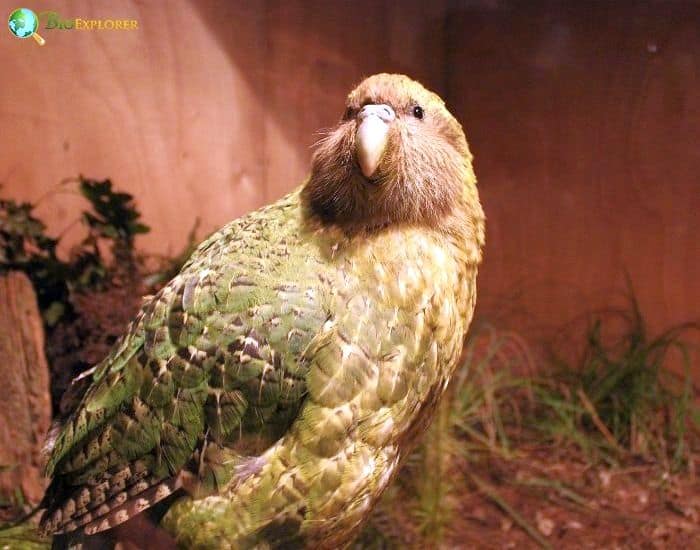
| Animalia | Psittaciformes | Strigopidae | Strigops | Strigops habroptilus |
The kakapo, known as the night parrot or owl parrot, is a large, flightless bird native to New Zealand. It has moss-green feathers with yellow accents, giving it excellent camouflage in its forest habitat. Weighing up to 9 pounds, it is one of the heaviest parrots in the world. The kakapo is nocturnal, relying on its sharp sense of smell and quiet movements to navigate its surroundings.
According to the IUCN, this unique bird is critically endangered, with fewer than 250 individuals left[1], due to habitat loss, introduced predators such as rats and stoats, and its low reproductive rate.
2. Spoon-billed Sandpiper
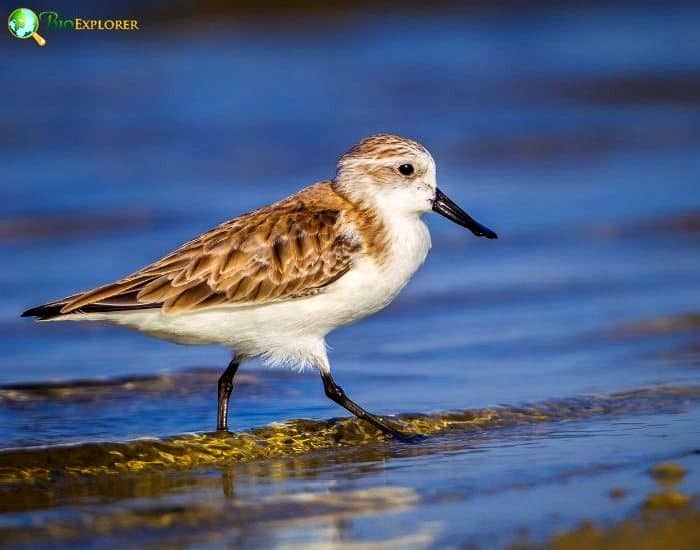
| Animalia | Charadriiformes | Scolopacidae | Calidris | Calidris pygmaea |
The Spoon-billed Sandpiper is a small wading bird distinguished by its unique spatula-shaped bill. Breeding adults display a rusty head and breast, while non-breeding individuals have a more subdued grayish-brown plumage. This species breeds in northeastern Russia and, in the winter, migrates to Southeast Asia, including countries such as Myanmar, Thailand, and Bangladesh.
The global population is critically endangered, with estimates ranging from 240 to 620 mature individuals, primarily due to habitat loss from land reclamation, human disturbance, and pollution[2].
3. Ivory-billed Woodpecker
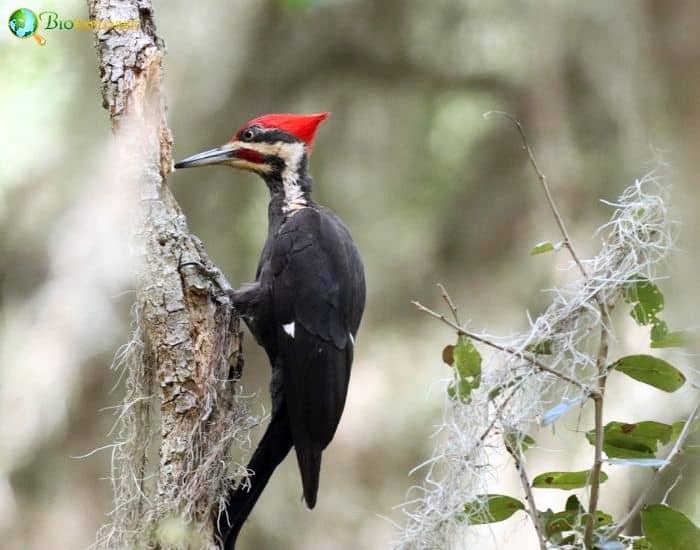
| Animalia | Piciformes | Picidae | Campephilus | Campephilus principalis |
The ivory-billed woodpecker is among the largest Woodpeckers in the world, measuring about 20 inches in length with a wingspan of approximately 30 inches. It is characterized by its glossy black plumage, prominent white stripes along the neck, and distinctive white patches on the wings. Males feature a striking red crest, while females have a black crest.
Historically, this species inhabited the old-growth forests of the southeastern United States and parts of Cuba. However, extensive logging and habitat destruction in the 19th and early 20th centuries led to a severe decline in their population. The last universally accepted sighting of the species was in Cuba in 1987. Conservationists continue searching for surviving individuals, but some consider the species critically endangered and extinct[3].
4. California Condor
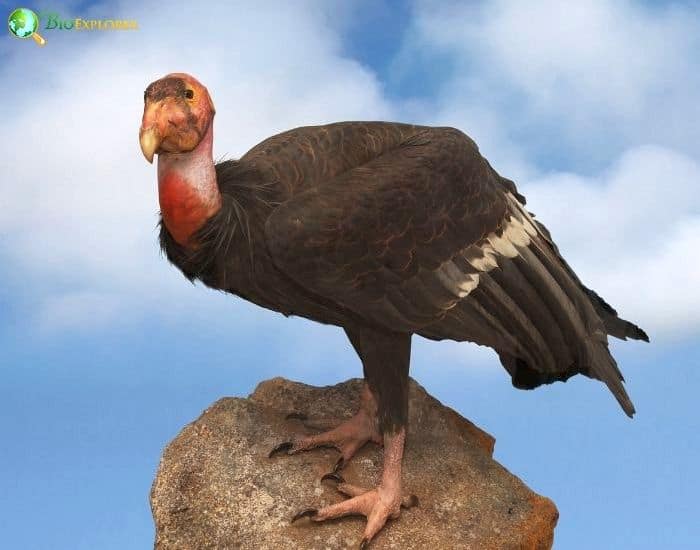
| Animalia | Accipitriformes | Cathartidae | Gymnogyps | Gymnogyps californianus |
The California condor is the largest land bird in North America, boasting a wingspan of up to 9.5 feet and weighing between 17 to 26 pounds. Its predominantly black plumage is complemented with white patches on the underside of its wings. Its bald head varies in color from yellow to orange.
Historically, California condors inhabited a vast range across North America, from California to Florida and Western Canada to Northern Mexico. However, by the mid-20th century, their numbers had plummeted due to habitat destruction, lead poisoning, and poaching. In fact, in 1982, less than 25 condors remained worldwide.
Conservation efforts, including captive breeding programs, have been implemented to save the species from Extinction. As a result, the global population of California condors has increased to over 500 individuals. Regardless, the species remains critically endangered, facing ongoing threats such as lead poisoning from ingested spent ammunition[4].
5. Imperial Woodpecker
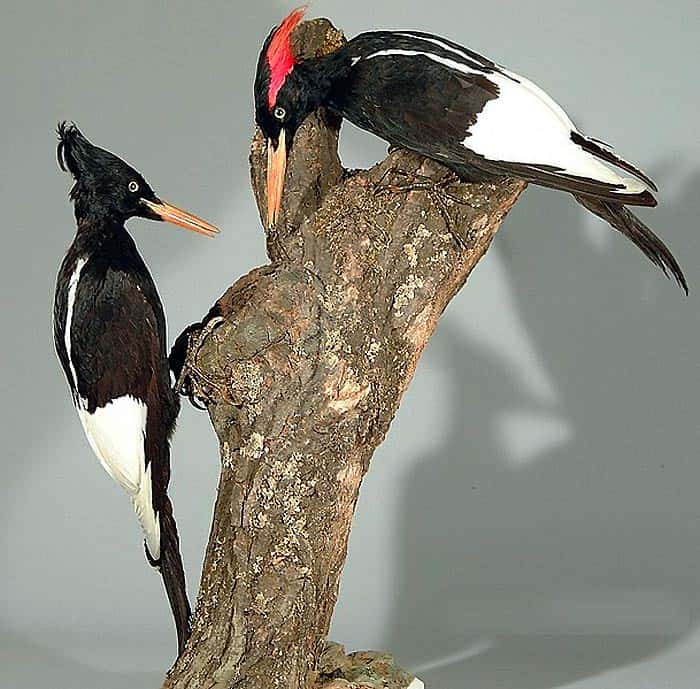
| Animalia | Piciformes | Picidae | Campephilus | Campephilus imperialis |
The imperial woodpecker is one of the largest species, measuring 22 to 24 inches long. Males exhibited a striking red crest, while females had a black crest; both sexes featured predominantly black plumage with prominent white wing patches and a large ivory-colored bill.
Endemic to Mexico, this species inhabited the montane pine and pine-oak forests of the Sierra Madre Occidental, favoring elevations above 6,500 feet in the north and above 8,200 feet in the south.
The imperial woodpecker’s population decline is attributed to extensive logging of mature forests, which led to significant habitat loss and hunting pressures. The last confirmed sighting occurred in the 1950s, and the species is considered critically endangered. However, many experts believe that the imperial woodpecker is now extinct[5].
6. Forest Owlet
| Animalia | Strigiformes | Strigidae | Athene | Athene blewitti |
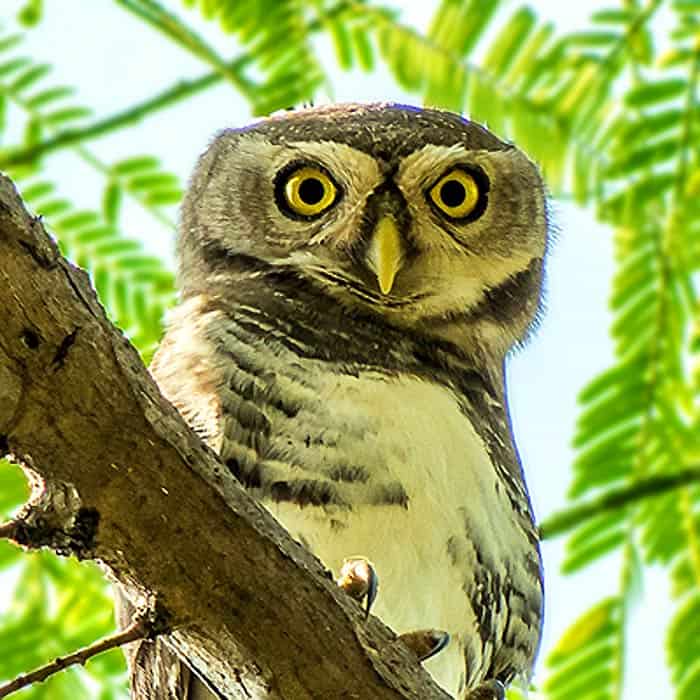
The forest owlet is a small, stocky owl measuring approximately 23 cm long. It features dark grey-brown upperparts with heavily banded wings and tail, a pale facial disc, and striking yellow eyes.
Endemic to central India, the forest owlet inhabits dry deciduous forests, particularly those dominated by teak. Its range includes parts of Maharashtra, Madhya Pradesh, and Odisha. This species is classified as endangered, with its population estimated to be less than 1,000 fully grown individuals. The primary threats to the forest owlet are habitat loss due to illegal logging, human encroachment, and forest fires[6].
7. Christmas Island Frigatebird
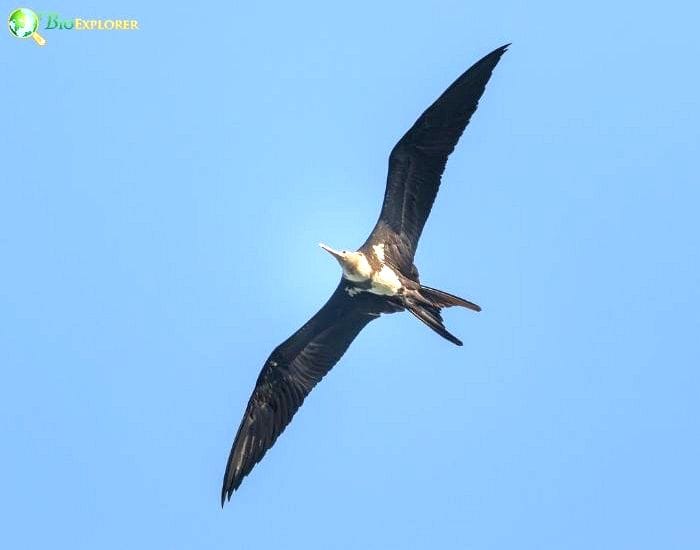
| Animalia | Suliformes | Fregatidae | Fregata | Fregata andrewsi |
The Christmas Island frigatebird (also known as the Christmas frigatebird) is a large seabird endemic to Christmas Island, an Australian territory in the Indian Ocean. The males are predominantly black with a distinctive white belly patch and a red gular sac, which they inflate during courtship displays. Females are slightly larger, with a white breast and belly and a black head and throat. Both sexes possess long, narrow wings and a deeply forked tail, with a wingspan reaching up to 2.5 meters.
This species breeds exclusively on Christmas Island, nesting in tall forest Trees. Outside the breeding season, they forage over the Indian Ocean, often venturing to Southeast Asia, including Indonesia and Malaysia.
The Christmas Island frigatebird is classified as Critically Endangered by the IUCN, with an estimated population of under 5000 mature individuals. In the past, the major threat to this species was the habitat loss and pollution caused by phosphate mining. However, their biggest current threat is entanglement in fishing gear[7].
8. Night Parrot
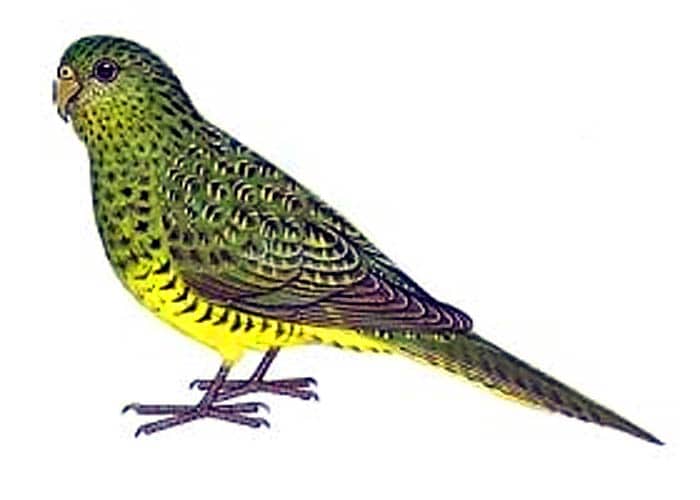
| Animalia | Psittaciformes | Psittacidae | Pezoporus | Pezoporus occidentalis |
The night parrot is a small bird native to Australia. It is about 22 to 25 cm long. It has a predominantly bright green plumage adorned with black and yellow markings, providing effective camouflage within its habitat. The species is nocturnal and ground-dwelling, favoring dense spinifex grasslands and arid shrublands across arid and semi-arid regions of Australia.
Once thought extinct due to habitat loss and predation by introduced species, the Night Parrot was rediscovered in 2013. Recent estimates suggest a population of just 250 mature individuals, classifying it as a critically endangered species.
In September 2024, a significant discovery was made in the Ngururrpa Indigenous Protected Area in Western Australia’s Great Sandy Desert, where researchers identified a population of around 50-night parrots. This is the largest known group of night parrots to date[8].
9. Marquesan Imperial Pigeon
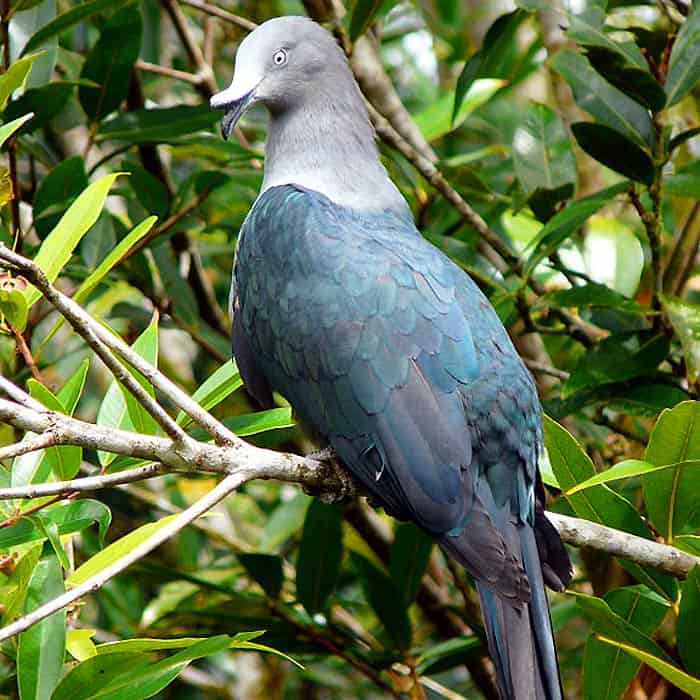
| Animalia | Columbiformes | Columbidae | Ducula | Ducula galeata |
The Marquesan Imperial Pigeon, often called the Upe or Nuku Hiva imperial pigeon, is a bird native exclusively to Nuku Hiva in the Marquesas Islands, French Polynesia. It is among the largest Pigeons, measuring approximately 50 to 55 cm long and weighing around 900 grams. The bird exhibits a sooty-gray head, throat, and breast, with a distinctive white band behind the bill. Its upperparts are glossy green with a bluish tint, and it has a large black bill with a swollen cere.
Historically, this pigeon inhabited various valleys across Nuku Hiva but is now primarily found in the western part of the island. It prefers forested areas ranging from 200 to 1,500 meters above sea level.
The Marquesan Imperial Pigeon is classified as Endangered, with an estimated population of just 80 to 150 individuals. The primary threats to its survival include habitat degradation due to overgrazing by feral herbivores, such as goats, and hunting pressures. Conservation efforts focusing on habitat protection and controlling hunting are ongoing; they are crucial for the species’ continued survival[9].
10. New Caledonian Owlet-Nightjar
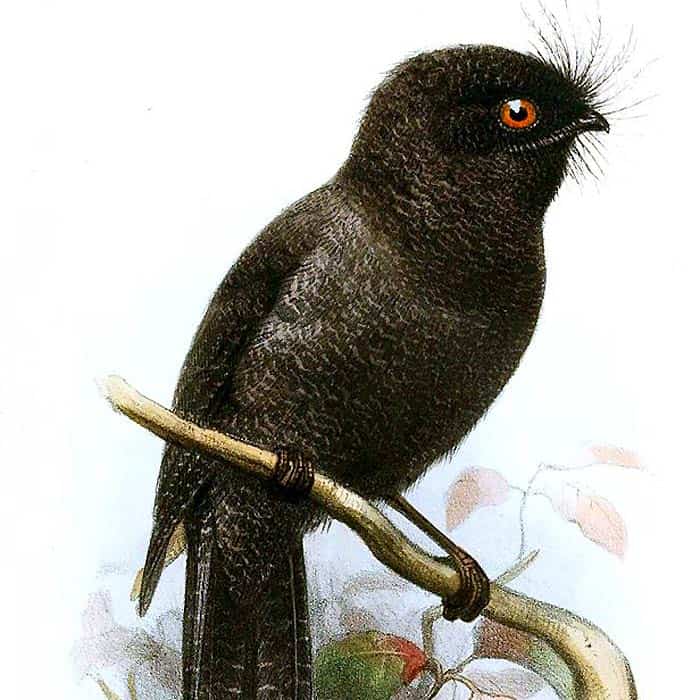
| Animalia | Apodiformes | Aegothelidae | Aegotheles | Aegotheles savesi |
The New Caledonian Owlet-nightjar (often called the enigmatic owlet-nightjar) is a rare and elusive bird endemic to New Caledonia. It is the second-largest known owlet-nightjar, with vermiculated grey-brown and black plumage, a long, slightly rounded tail, short, rounded wings, and long, stout legs.
This species inhabits Melaleuca savanna and humid forests, with records from lowland and montane regions up to 800 meters in elevation. The last verified sighting occurred in 1998 when an individual was spotted searching for Insects in a forest.
The New Caledonian Owlet-nightjar is classified as Critically Endangered, with an estimated population of fewer than 50 individuals. Primary threats include habitat loss due to logging and mining and increased fire frequency[10].
11. Stresemann’s Bristlefront
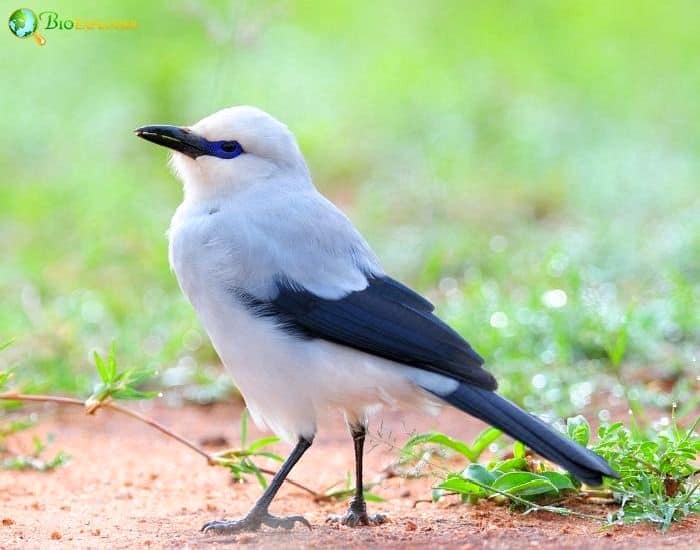
| Animalia | Passeriformes | Rhinocryptidae | Merulaxis | Merulaxis stresemanni |
The Stresemann’s bristlefront is a critically endangered bird species endemic to Brazil‘s Atlantic Forest. Specifically, the species now exclusively inhabits the forest’s Mata do Passarinho Reserve, which straddles the Minas Gerais and Bahia border, encompassing approximately 2,352 acres.
Males exhibit a uniform slaty-gray coloration with a dark rufous-chestnut rump. At the same time, females are cinnamon-brown above and bright cinnamon below. Both sexes possess distinctive bristles on their foreheads.
The Stresemann’s bristlefront is one of the world’s rarest birds, with an estimated population of less than 50 mature individuals. The species faces significant threats from habitat loss due to fires, logging, and agricultural expansion[11].
12. Raso Lark
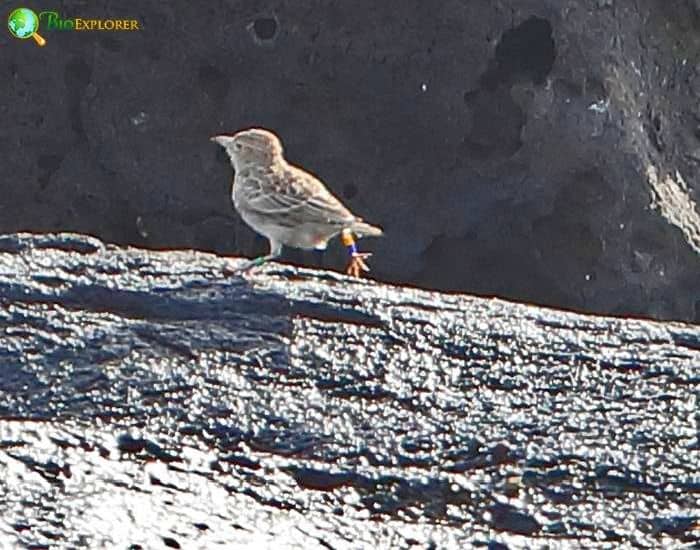
| Animalia | Passeriformes | Alaudidae | Alauda | Alauda razae |
The Raso lark is a small passerine bird endemic to Raso Islet in the Cape Verde archipelago. Males are generally larger than females, measuring between 14 and 18 cm in length. The species exhibits black and brown-streaked plumage with a pale chest and an erectile crest. Males possess a thicker, more robust bill compared to females.
Historically, the Raso lark inhabited multiple islands within the archipelago, including Branco and São Vicente. However, its current range is confined to the arid, uninhabited Raso Islet. The lark prefers level plains with volcanic soil and small vegetated patches along dry stream beds, which serve as feeding and breeding grounds.
The species is critically endangered, with estimates of the population at around 200 to 1,000 individuals. It should also be noted that the population has a skewed sex ratio: there are about two males for every female. The primary threats to this species are habitat limitations, predation by the Cape Verde giant Gecko, and the potential introduction of mammalian predators[12].
13. Blue-throated Macaw
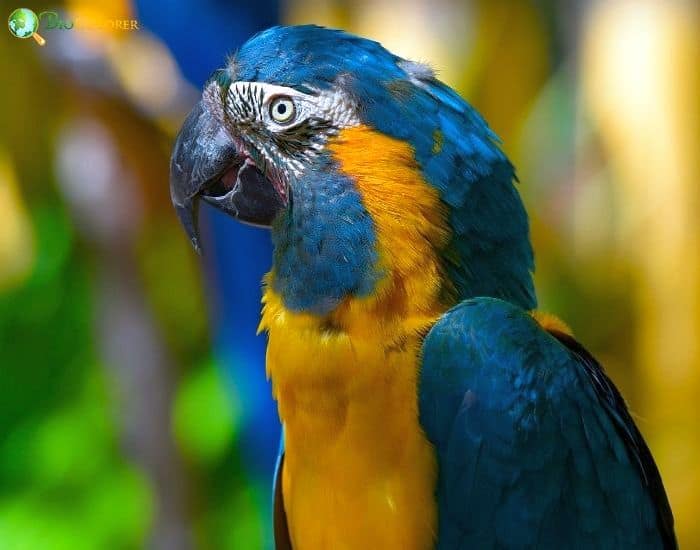
| Animalia | Psittaciformes | Psittacidae | Ara | Ara glaucogularis |
The blue-throated macaw is a parrot species native to the savannas of north-central Bolivia, particularly the Beni Department. Measuring approximately 85 cm in length, these macaws display striking turquoise-blue upperparts and bright yellow underparts, with a distinctive blue patch on the throat that sets them apart from similar species.
This species inhabits the Llanos de Moxos region, favoring forested islands within the grasslands, especially those dominated by Motacú palms (Attalea phalerata), which provide essential food and nesting sites.
The blue-throated macaw is classified as Critically Endangered, with recent estimates indicating a wild population of under 300 individuals. The main threats to the species are habitat destruction due to cattle ranching and illegal pet trade. Conservation initiatives, such as the establishment of protected reserves and artificial nest box programs, are currently running to support the recovery of this species[13].
14. Jocotoco Antpitta
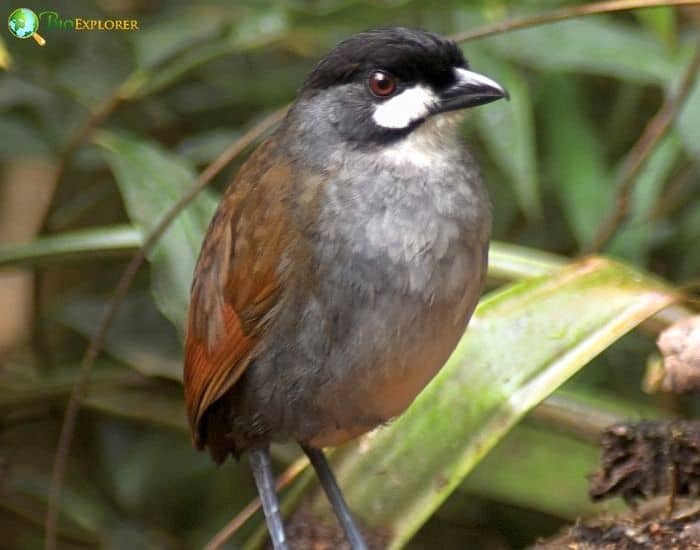
| Animalia | Passeriformes | Grallariidae | Grallaria | Grallaria ridgelyi |
The jocotoco antpitta is a rare bird species discovered in 1997 in the montane forests of southeastern Ecuador. It is characterized by a plump, round body, long legs, a black cap, white cheek patches, and brownish-olive upperparts with pale gray underparts.
This species inhabits wet, montane evergreen forests with a dense bamboo understory, typically between 2,300 and 2,600 meters.
The jocotoco antpitta is currently classified as Endangered, with an estimated population of 150 to 700 individuals. The primary threat to its survival is habitat loss due to deforestation and land conversion. One conservation effort for this species was led by the Jocotoco Foundation; they purchased over 9000 acres of land on which the Jocotoco antpitta was found to protect the species. This land now makes up the Tapichalaca Reserve, which aims to preserve many endangered bird species[14].
15. Gurney’s Pitta
| Animalia | Aves | Passeriformes | Grallariidae | Chordata | Grallaria ridgelyi |
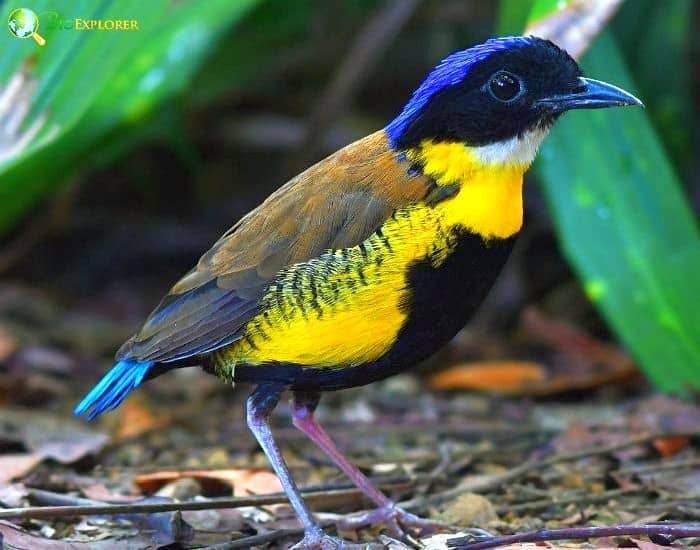
Gurney’s pitta is a medium-sized passerine bird known for its striking appearance. Males have a vibrant blue crown, a bright yellow half-collar, and black-and-yellow underparts. In contrast, females have a pale yellow crown and black-barred yellowish breast and belly.
This species inhabits lowland rainforests, primarily in southern Myanmar, and is considered almost extinct in Thailand. Gurney’s pitta forages singly or in pairs in gullies and ditches, often near water.
Its population has declined due to habitat loss from deforestation and agricultural expansion, leading to its classification as Critically Endangered by the IUCN. Specifically, estimates show that over 80% of the species’ habitat in southern Myanmar was lost due to palm oil plantations[15].
16. Philippine Eagle
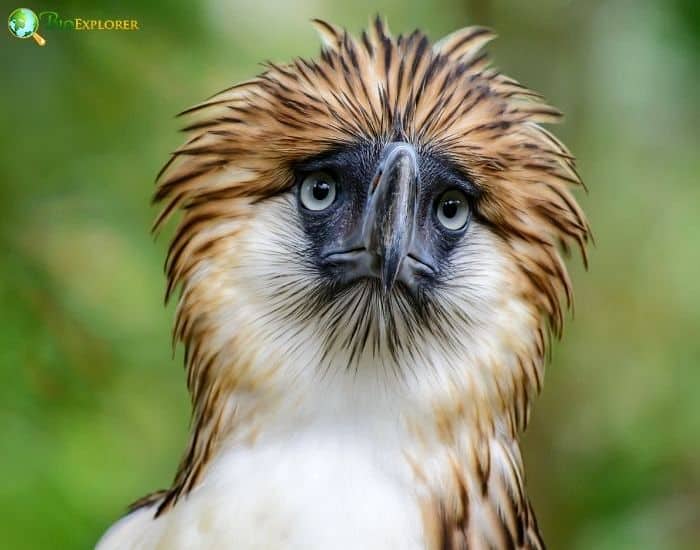
| Animalia | Accipitriformes | Accipitridae | Pithecophaga | Pithecophaga jefferyi |
The Philippine eagle (also called the monkey-eating eagle) is a critically endangered raptor endemic to the Philippines. It is one of the world’s largest Eagles, measuring 86 to 100 cm in length, with a wingspan of approximately 220 cm. The species exhibits a distinctive appearance, featuring brown and white plumage and a shaggy crest.
This apex predator primarily inhabits the remaining patches of old-growth Tropical Rainforests on Luzon, Samar, Leyte, and Mindanao islands. Its diverse diet includes flying lemurs, palm civets, snakes, and monitor Lizards.
The species faces significant threats from habitat loss due to deforestation, logging, mining, and agricultural expansion. Additionally, hunting and exposure to pesticides further endanger its survival. Current population estimates suggest that less than 250 to 750 individuals remain in the wild.
Conservation efforts are underway, including habitat protection, captive breeding programs, and public awareness campaigns, to safeguard the future of this iconic bird. Additionally, it should be noted that killing a Philippine eagle is illegal, punishable by law by up to 12 years of imprisonment and a fine[16].
17. Bahama Nuthatch
| Animalia | Passeriformes | Sittidae | Sitta | Sitta insularis |
The Bahama nuthatch is a critically endangered bird species endemic to the pine forests of Grand Bahama Island in the Bahamas. Slightly larger than the related Brown-headed Nuthatch, it is distinguished by a darker brown stripe on its face, a longer and slenderer bill, and a distinct, warbling call. Its plumage is grayish-blue above with buff-colored underparts, and the species is 11 to 12 cm long.
The Bahama nuthatch’s population has experienced a severe decline due to habitat loss from logging, development, and natural disasters. For example, Hurricane Dorian in 2019 caused significant damage to the species’ habitat; in fact, no Bahama nuthatch has been sighted since this hurricane occurred. Also, invasive species, including raccoons and snakes, pose additional threats by preying on nuthatches or competing for nesting sites[17].
18. Bali Myna
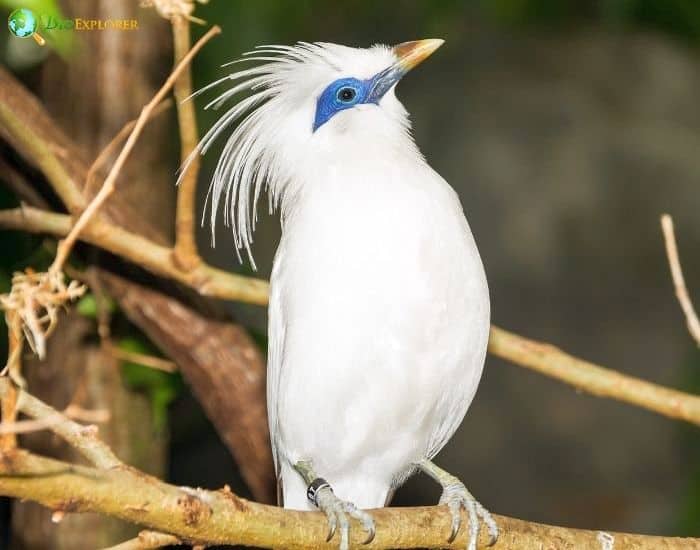
| Animalia | Passeriformes | Sturnidae | Leucopsar | Leucopsar rothschildi |
The Bali Myna (or the Bali Starling) is a striking bird endemic to Bali, Indonesia. Measuring approximately 25 centimeters in length, it has pure white plumage accented by black tips on its wings and tail, a distinctive drooping crest, and vibrant blue skin surrounding its eyes. Both sexes share a similar appearance, though males may exhibit slightly longer crests.
This species inhabits open woodlands, deciduous forests, and tree savannas, primarily in the northwestern region of Bali. Historically, it ranged across the island, but its presence is now largely confined to the Bali Barat National Park due to habitat loss and poaching.
The Bali Myna is critically endangered, with wild populations plummeting to less than 50 individuals. Conservation efforts have been implemented to bolster numbers, including captive breeding and reintroduction programs. Despite these initiatives, the species remains at significant risk due to ongoing habitat destruction and illegal trapping for the pet trade[18].
19. Madagascar Pochard
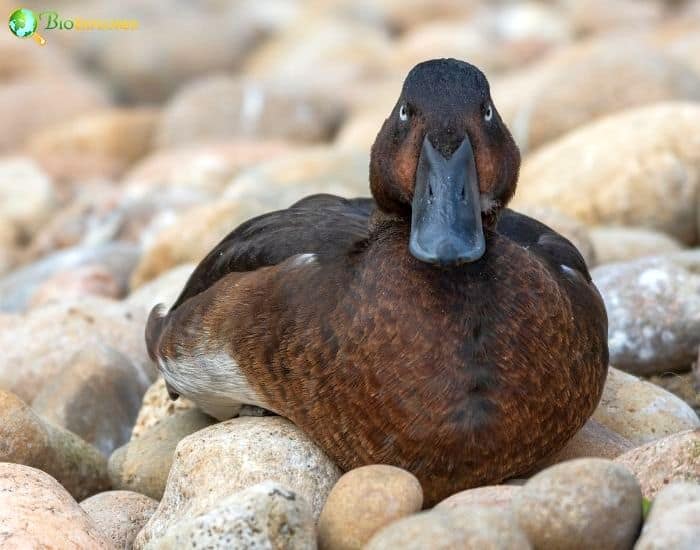
| Animalia | Anseriformes | Anatidae | Aythya | Aythya innotata |
The Madagascar Pochard is a critically endangered diving duck endemic to Madagascar. Measuring approximately 42–56 cm in length, it exhibits a rich chestnut-brown plumage, with males having a distinctive white Iris, while females possess a darker eye. Both sexes feature dark gray bills and legs.
Historically, this species inhabited shallow lakes and marshes with dense vegetation in the Lake Alaotra basin. However, it was believed to be extinct until its rediscovery in 2006 at Lake Matsaborimena, a deep volcanic lake in northern Madagascar. Currently, wild populations are known at Lake Sofia and Lake Matsaborimena. Still, the overall population is quite low, at around 50 to 70 individuals. The species’ decline is attributed to habitat degradation from rice cultivation, invasive fish species, and increased siltation[19].
20. Elegant Sunbird
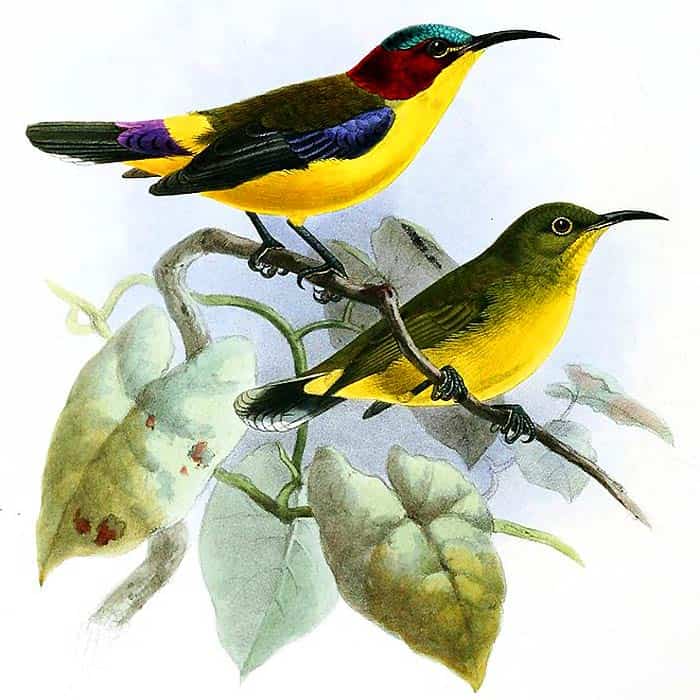
| Animalia | Passeriformes | Nectariniidae | Aethopyga | Aethopyga duyvenbodei |
The elegant sunbird is a small, brightly colored bird native to Sangihe Island in Indonesia. Males are striking, with a shimmering blue-green crown, red ear coverts, and a bold red neck and upper chest contrasting with their vibrant yellow underparts. Their long, slightly curved bill is perfectly adapted for feeding on nectar. While less vivid, females feature olive-green upperparts and yellowish underparts, providing a more subdued coloring.
This species inhabits primary and secondary forests and plantations near Mount Sahendaruman in southern Sangihe. The elegant sunbird population is currently suspected to be declining due to habitat loss from human encroachment. As such, it is classified as Endangered on the IUCN Red List. The total population of this species is estimated to be around 13,000 to 29,000 mature individuals[20].
21. Hooded Grebe
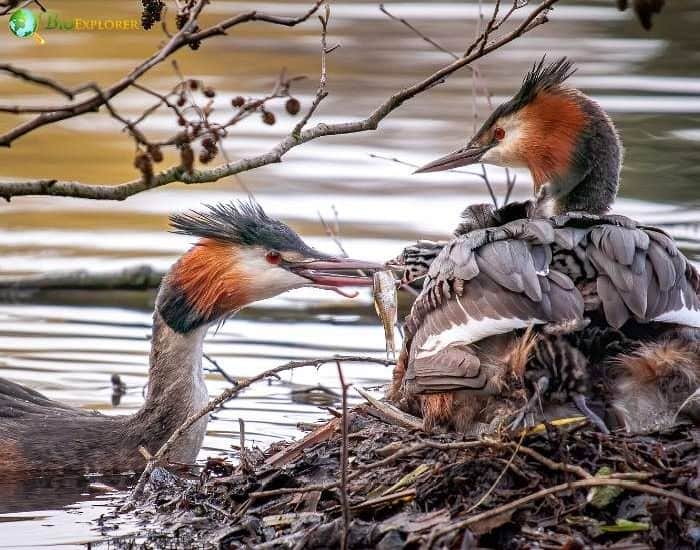
| Animalia | Podicipediformes | Podicipedidae | Podiceps | Podiceps gallardoi |
The hooded grebe is a medium-sized waterbird endemic to the remote basaltic lakes of Patagonia in southern Argentina. Measuring approximately 32 cm in length, it is characterized by its predominantly white plumage contrasted with a black head and back and a distinctive red eye. During the breeding season, it develops a striking black crest, giving the appearance of a “hood”.
Discovered in 1974, the hooded grebe has experienced a significant population decline, with estimates indicating a reduction of approximately 80% since the 1980s. Estimates show that under 800 mature individuals exist, leading to its classification as Critically Endangered on the IUCN Red List.
The species faces multiple threats, including predation by invasive species such as the American mink, which is responsible for significant mortality in breeding colonies. Additionally, habitat degradation due to overgrazing by sheep leads to erosion and limits the growth of essential vegetation. Conservation efforts are underway to mitigate these threats. To be specific, this includes the removal of invasive predators, habitat restoration, and the establishment of protected areas to safeguard the remaining population[21].
22. Yellow-eyed Penguin
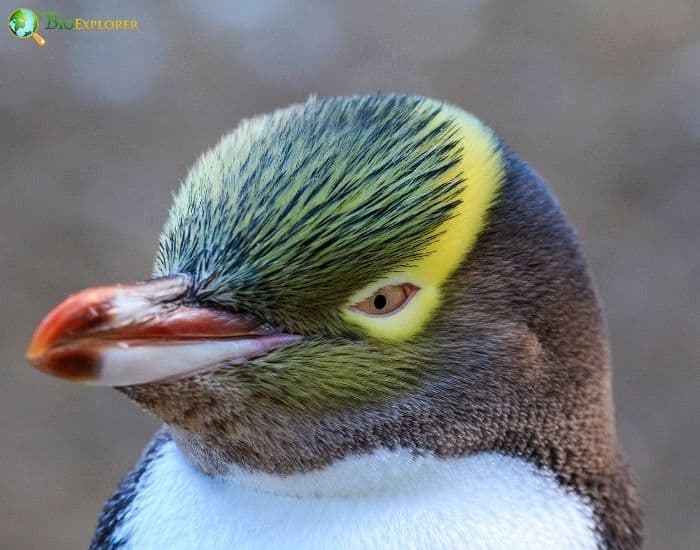
| Animalia | Sphenisciformes | Spheniscidae | Megadyptes | Megadyptes antipodes |
The yellow-eyed penguin, one of the largest penguins in the world, is native to New Zealand. Standing approximately 65 to 70 centimeters tall and weighing 5 to 8 kilograms, it is characterized by pale yellow eyes and a bright yellow band of feathers encircling its head. This species inhabits the southeastern coastlines of New Zealand’s South Island, Stewart Island, the Auckland Islands, and Campbell Island. Their diet primarily consists of fish species such as blue cod, red cod, opal fish, sprat, and squid, which they hunt during foraging trips extending up to 20 kilometers offshore.
The yellow-eyed penguin is classified as Endangered, with an estimated population of around 3,400. The species faces significant threats from habitat destruction, introduced predators like stoats and feral cats, human disturbances, and climate change, all contributing to their declining numbers[22].
23. Rufous-headed Hornbill
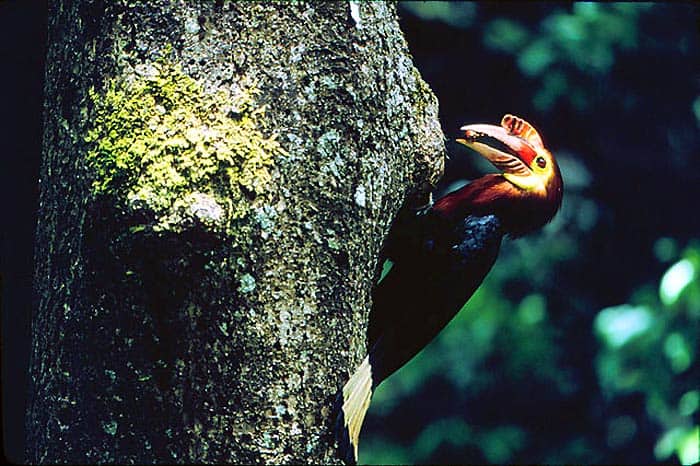
| Animalia | Bucerotiformes | Bucerotidae | Rhabdotorrhinus | Rhabdotorrhinus waldeni |
The Rufous-headed Hornbill (Walden’s Hornbill or the Visayan Wrinkled Hornbill) is a critically endangered species endemic to the Philippines. Measuring approximately 60–65 cm long, males exhibit a rufous-colored head, neck, and upper breast, with the remaining plumage being blackish with a green gloss. They possess a red bill and large casque, with orange bare skin around the eyes and throat. Females are similar but have a black head and neck, blue-tinged facial and throat skin, and a smaller casque.
This Hornbill inhabits the rainforests of Negros and Panay islands, favoring closed-canopy, evergreen forests. It has also been observed in selectively logged habitats and large trees in clearings.
The population has suffered from habitat loss from deforestation and hunting, leading to its critical status. Conservation efforts, such as nest-guarding programs, have been implemented to protect remaining populations, resulting in a significant decrease in poaching and a gradual increase in numbers[23]. Currently, the species’ total population is estimated to be around 1500 to 4000.
24. Black Stilt
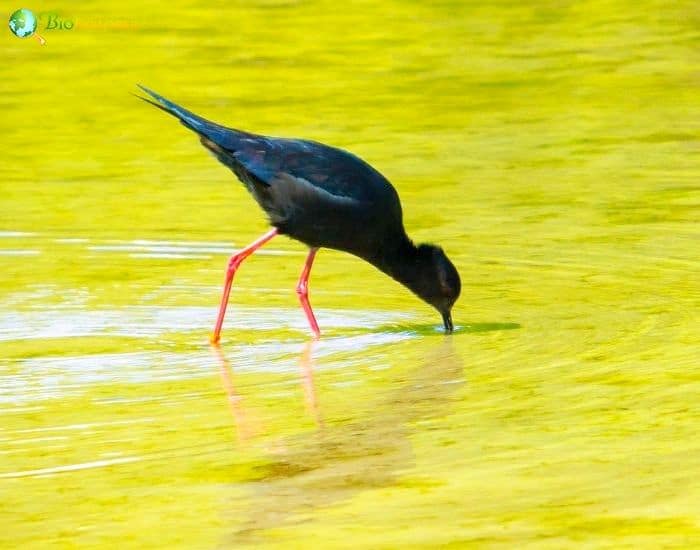
| Animalia | Charadriiformes | Recurvirostridae | Himantopus | Himantopus novaezelandiae |
The black stilt is one of the rarest wading birds in the world, known for its striking black plumage, long pink legs, and thin black bill. Endemic to New Zealand, it is primarily found in the braided rivers and wetlands of the Mackenzie Basin on the South Island. The bird’s diet includes aquatic insects, and small invertebrates foraged in shallow waters.
Once widespread, the black stilt population faced major declines due to habitat destruction and predators such as stoats and feral cats. By the 1980s, only 23 adults remained. Focused conservation efforts, including predator control, captive breeding, and habitat restoration, have helped increase the population to around 169 adult birds in the wild as of 2023. It is currently considered Critically Endangered on the IUCN Red List[24].
25. Spix’s macaw
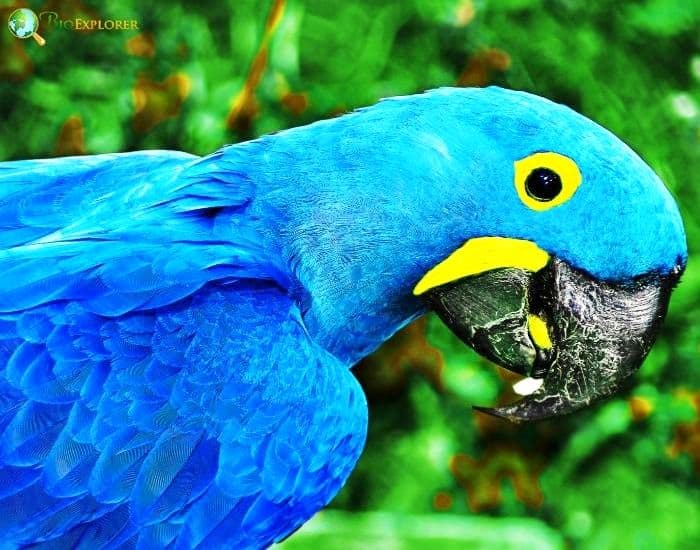
| Animalia | Psittaciformes | Psittacidae | Cyanopsitta | Cyanopsitta spixii |
The Spix’s macaw, also known as the little blue macaw, is a small parrot native to Brazil. It has cobalt-blue plumage with lighter blue on the head and a long, pointed tail. This species was once found in the gallery forests of the Rio São Francisco region, where they nested in Caraibeira trees and foraged for fruits and seeds.
Due to habitat loss, illegal trapping for the pet trade, and their naturally limited range, the species has faced extreme population decline, with the last wild sighting occurring in 2016. However, global captive breeding efforts have brought their population to around 110 individuals. In a landmark conservation achievement, Spix’s macaws were reintroduced to their natural habitat in 2022, with ongoing efforts to restore their forest habitat[25].
Conclusion
The rare birds discussed in this page highlight the urgent need for conservation efforts to protect species at risk of extinction. From habitat loss to invasive predators, these birds’ threats are varied and often severe. Many are already critically endangered, with populations teetering on the brink.
While ongoing conservation programs exist, much more work is needed to secure their futures. Supporting these efforts through education, habitat restoration, or policy changes. By acting now, we can help ensure that these unique species not only exist but also begin to thrive and maintain their vital roles within their ecosystems.


